On the Road is a weekday feature spotlighting reader photo submissions.
From the exotic to the familiar, whether you’re traveling or in your own backyard, we would love to see the world through your eyes.
Albatrossity
The birds of the oceans around New Zealand have not been nearly as impacted by humans as the land birds, although that is changing rapidly as humans begin to impact the oceans more and more. It is still possible to see lots of seabirds, shorebirds, and waterfowl there, and some of them are unique to that country. Since I live in a part of the country that hasn’t had beachfront property for the past 70 million years, I really enjoy seeing seabirds when I get the chance. And New Zealand offers you lots of chances, so this post and tomorrow’s post will feature just a few of those.
Map here.
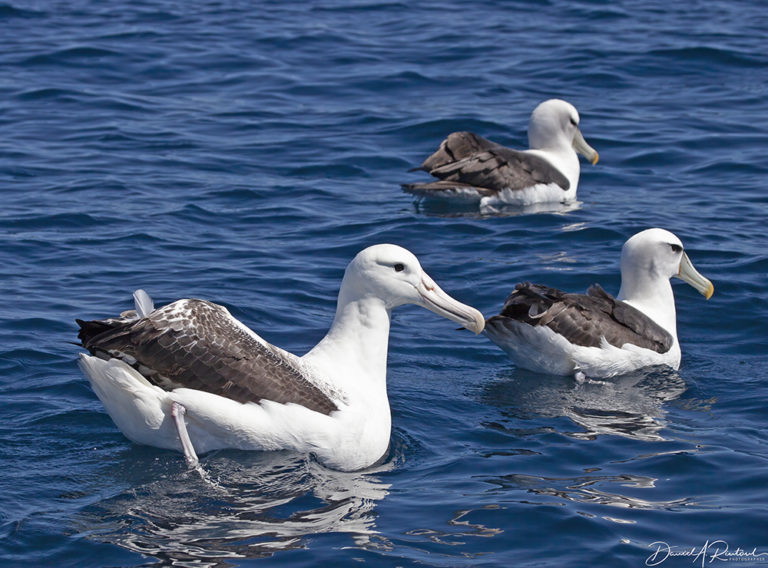
There are 22 species of albatross in the world, and 16 of these have been seen in New Zealand waters. I’ve seen six of them there, so obviously I have some work to do. One of the most spectacular is the Northern Royal Albatross (Diomedea sanfordi), a New Zealand endemic species. The Maori name for this species, and for all the other species of albatrosses, is toroa. When one of these approaches the boat, that 3 m (10 ft) wingspan gets your attention. This one was near Stewart Island, in the company of these two White-capped Albatrosses (aka Shy Albatross depending on which taxonomic authority you subscribe to), which have a wingspan of 8 ft, but obviously are much smaller than their huge Wandering companion.
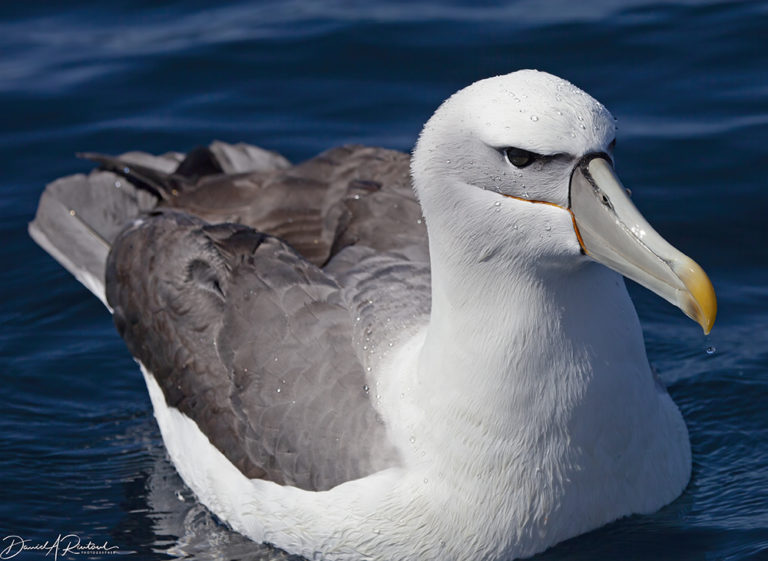
Here’s a better look at the White-capped Albatross (Thalassarche steadi), also near Stewart Island on that same fine December day.
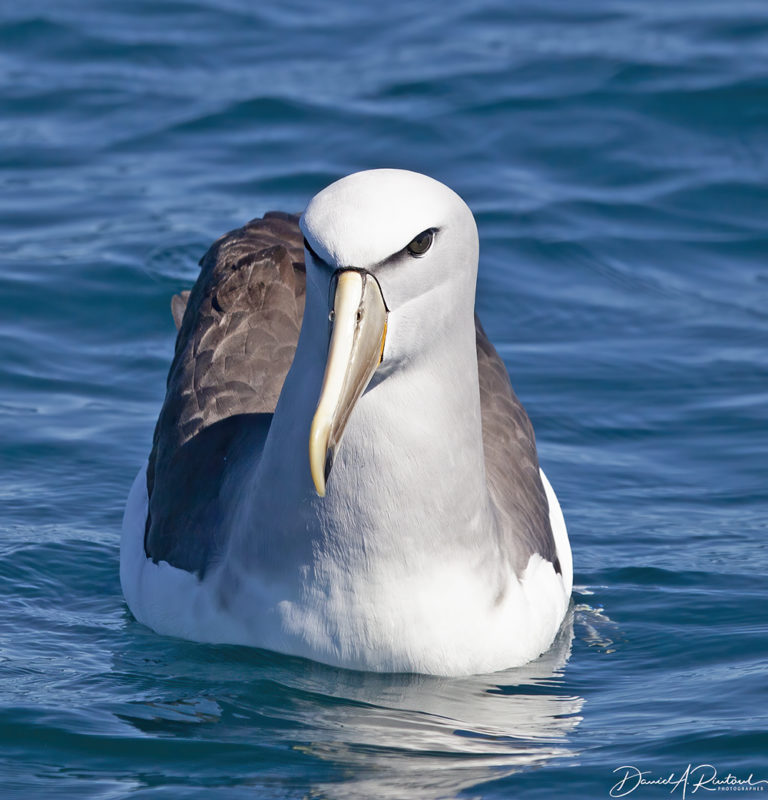
Another of the mollymawks (a term used for the smaller Thallasarche species) is this Salvin’s Albatross (T. salvini). These are on the endangered species list in NZ, due to the fact that they are often killed accidentally by fishing operations. The grey head and blackish bill tip distinguish this adult from the White-capped Albatross.
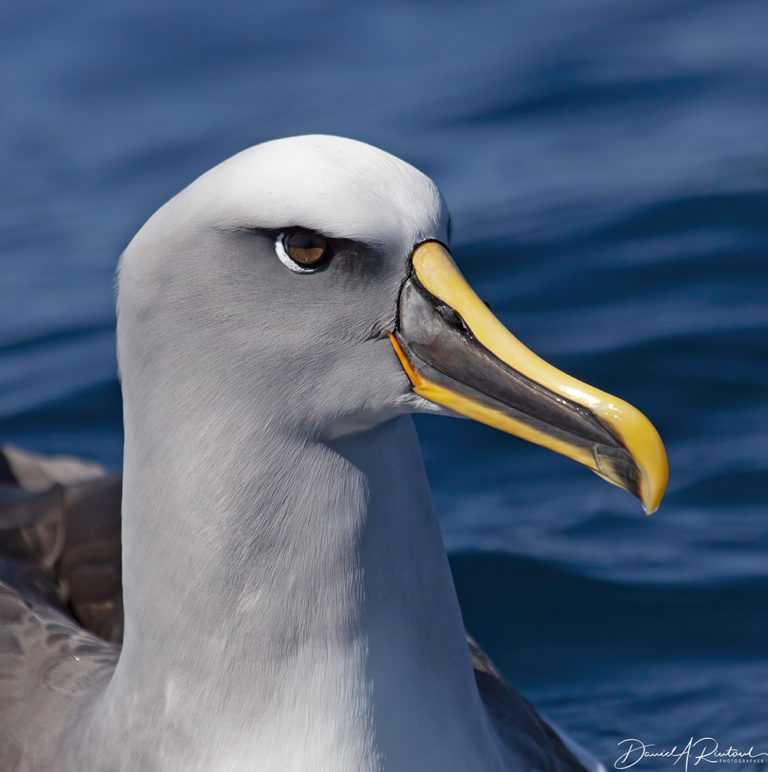
A third mollymawk is this Buller’s Albatross (T. bulleri), distinguished by that bright yellow tip, ridge, and underside of the bill. This is a New Zealand endemic; all known breeding populations are found in that country and its outlying islands. One of my favorite albatrosses!

The final albatross in this set is another giant, the Wandering Albatross (Diomedea exulans), one of the largest and most skillful flying birds in the world. They soar effortlessly over the waves, and in fact can travel literally around the world in the Southern Ocean without flapping their wings once. That bubble-gum pink bill and huge size are the best field marks for this one.
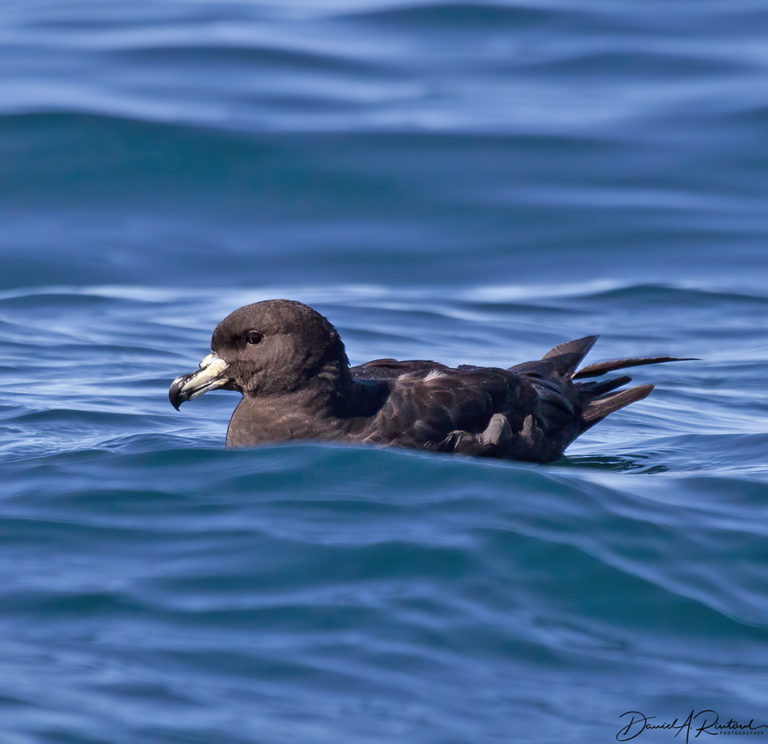
New Zealand has some other endemic seabird species as well, such as this Westland Petrel (Procellaria westlandica, taiko), which is also one of the rarest seabirds in the world (4000 breeding pairs, confined to a single breeding location in the coastal ranges of the South Island). This is a fairly large burrowing petrel, and it is thought that its size and aggressive temperament have been important in its ability to survive in the presence of cats, stoats, and other mammalian predators.
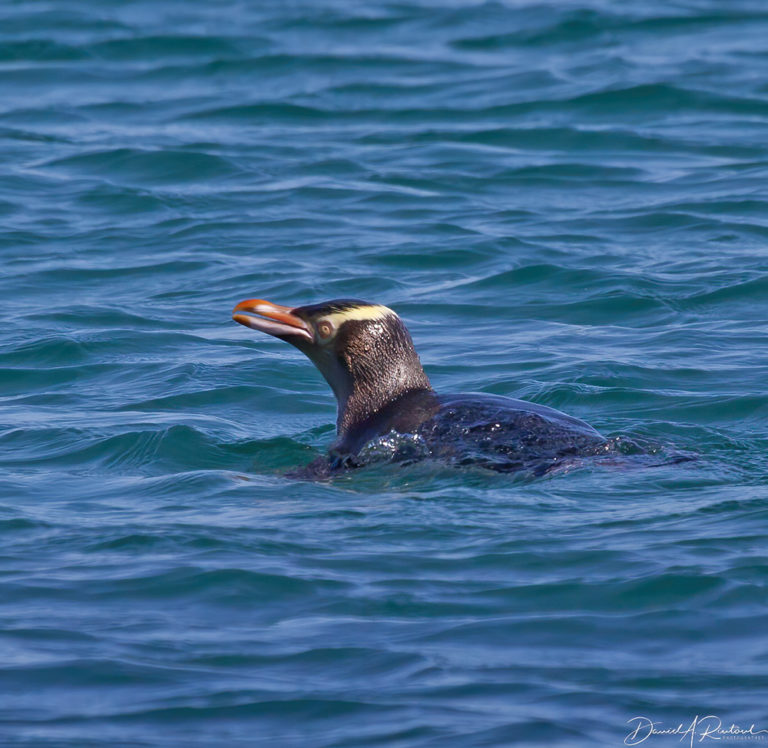
Of the 18 species of penguins in the world, 15 have been sighted in New Zealand waters, and several are endemic. This is one of the endemic species, Yellow-eyed Penguin (Megadyptes antipodes, hoiho), and also one of the few that breeds on “mainland” New Zealand. It is aptly named, and unmistakeable.

The Sacred Kingfisher (Todiramphus sanctus, kotare) is found in other parts of the South Pacific such as Australia and New Caledonia. It is the only kingfisher in the country, but is widespread and common.
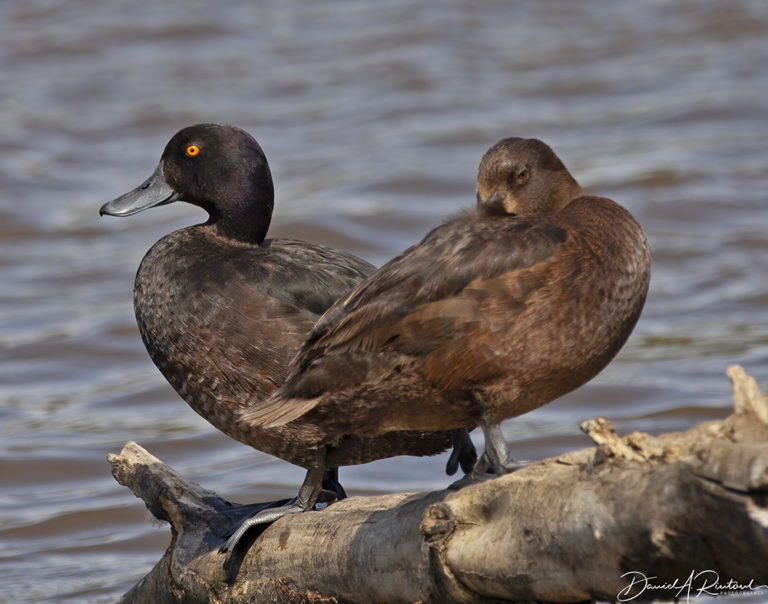
These bathtub toy duck lookalikes are New Zealand Scaup (Aythya novaeseelandiae, papango), which are an endemic species that is also common and widespread in the country. The male is darker with a yellow iris, and the female is browner with a brown iris, and they are among the cutest ducks in the world, IMHO.
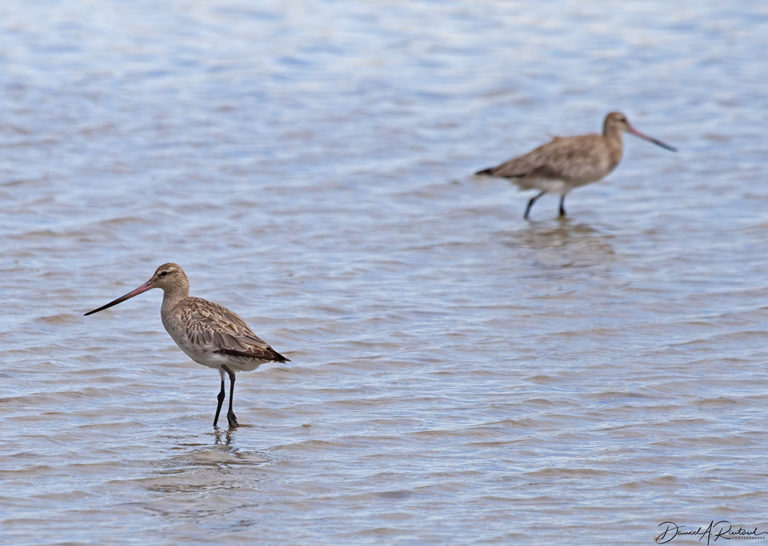
The final bird in this set is also one of the most amazing avian migrants known. These are Bar-tailed Godwits (Limosa lapponica, kuaka). They breed in Arctic Alaskan tundra, and fly nonstop to New Zealand, over 12,000 km (7,500 miles in American) of open ocean every fall. Their appearance every fall was a mystery to the Maori (‘Kua kite te kohanga kuaka? Who has seen the nest of the kuaka?’), and it was believed that they accompanied departed souls to the afterlife. In the spring they take a less direct path back to the tundra via eastern Asia.

eclare
What magnificent birds!
J R in WV
Wow, what a great group of wonderful birb photos!
Thanks David, for sharing your bounty of photographs with those of us lucky enough to hang out here to see these great posts!
Rob
So wonderful to see these photos as I am waking up this morning. Thanks, Albatrossity!
Mary G
The albatrosses look like tough customers with the scary beaks! The kingfisher is charming. I like that you give their Maori names. It’s so hard to comprehend the kuaka/Godwit’s ability to fly so far without stopping for food or rest. How do they stay aloft the whole 12,000 km? Do they fatten up like bears?
Nelle
I really appreciate the organization and explanations this week. What a thorough introduction to the birds of Nrw Zealand!
Albatrossity
@Mary G: Yes, they get very fat! Some of them have 55% of their body weight as fat when they leave Alaska. Fatter than bears.
Geminid
Thanks again for the wonderful photos. I passed them on to a few friends, to cheer them up on a rainy Christmas Eve. We have flood watches in Virginia.
marklar
The White capped Alabatross has a wonderful Amy Winehouse vibe.
arrieve
Wonderful as always, Albatrossity! That Buller’s albatross is a gorgeous creature.
Mike S (Now with a Democratic Congressperson!)
I love all of the seabirds too. Thanks for sharing all these excellent pics!
West of the Cascades
Such beautiful photos! I can’t see albatross photos without being reminded of the Rime of the Ancient Mariner.
“Farewell, farewell! but this I tell
To thee, thou Wedding Guest!
He prayeth well, who loveth well
Both man and bird and beast.
“He prayeth best, who loveth best
All things both great and small;
For the dear [insert deity of choice] who loveth us,
He made and loveth all.”
The Mariner, whose eye is bright,
Whose beard with age is hoar,
Is gone: and now the Wedding Guest
Turned from the bridegroom’s door.
He went like one that hath been stunned,
And is of sense forlorn:
A sadder and a wiser man,
He rose the morrow morn.
Chris T.
@Mary G: Yes, I kept thinking: those albatrosses look so stern! Except for that last one with the bubble-gum-pink beak anyway.
JanieM
Amazing and beautiful. I love the blue of the kingfisher and the stern looks of the mollyhawks. Trying to imagine how migration patterns evolved (what were the intermediate steps?!?) makes my head hurt. Monarch butterflies are even more amazing in that as I understand it, the generation that migrates northward isn’t the same one that eventually flies back southward.
Princess Leia
What a lovely gift to get to see these magnificent birds. What a treasure you are, Albatrossity!!!
TomatoQueen
Oh all my favorite sea birds. GODWITS. They get the job done.
A woman from anywhere (formerly Mohagan)
@Princess Leia: Amen to that. Thanks, Albatrossity!
ETA: We have Marbled Godwits here in N Ca and I love them. That bill!
Albatrossity
Thanks, all. I’m glad you enjoy these pics, and I certainly enjoy sharing them here. Hopefully New Zealand, in the flesh, sometime in the future.
Denali
@Albrtrosssity,
From your posting name and your stunning photos of albatross(I assume the word does not have a plural form), I am sure you must be familiar with the poem The Albatross by Charles Baudulaire- there are many translations available, none of which do it justice. We saw one at a distance in Milford Sound- my photo is only a white blur, but it was exciting to see one of these fabled birds.
stinger
Whoa, the look on that Buller’s face!
The expression “cute as a duck” should really be more common.